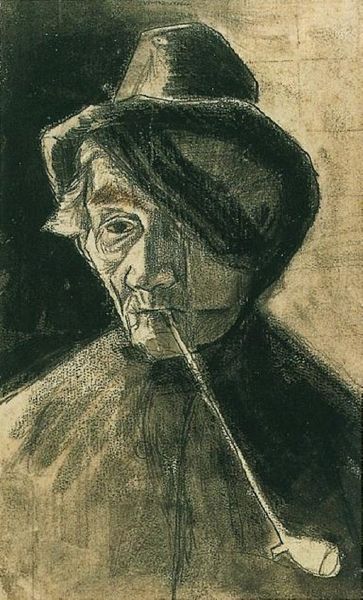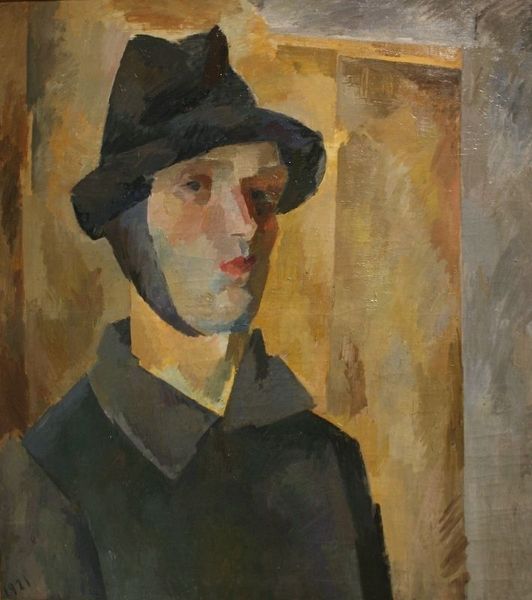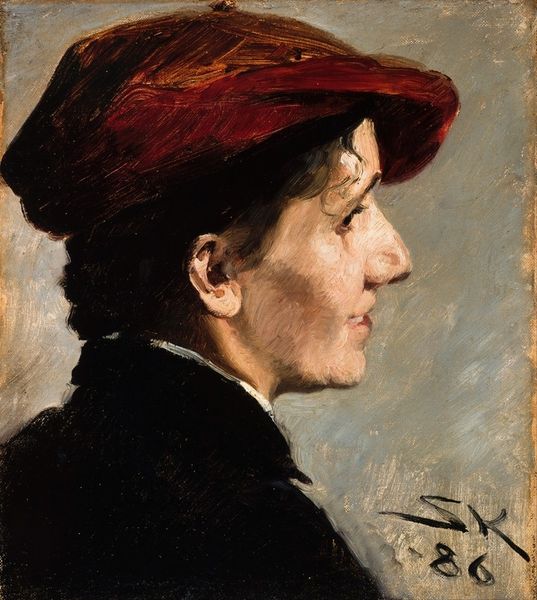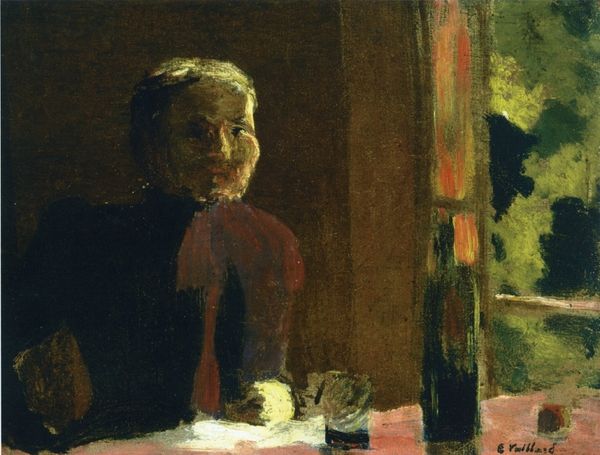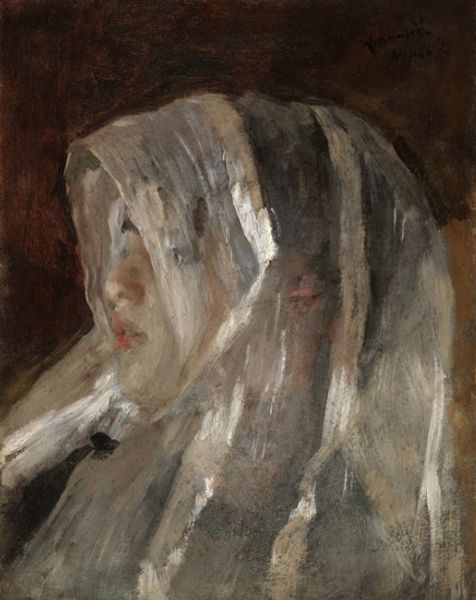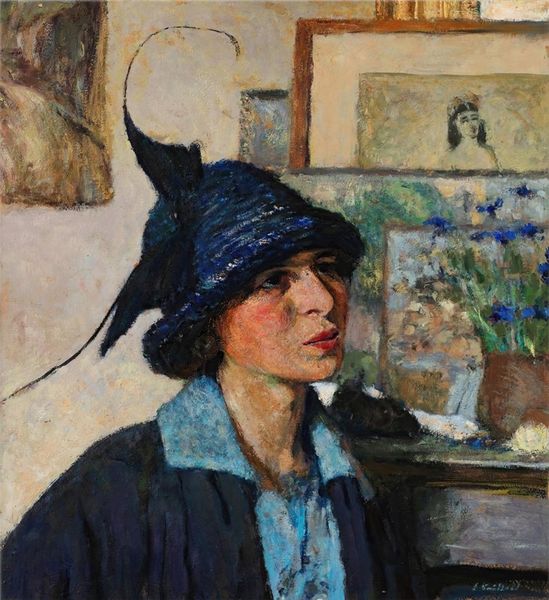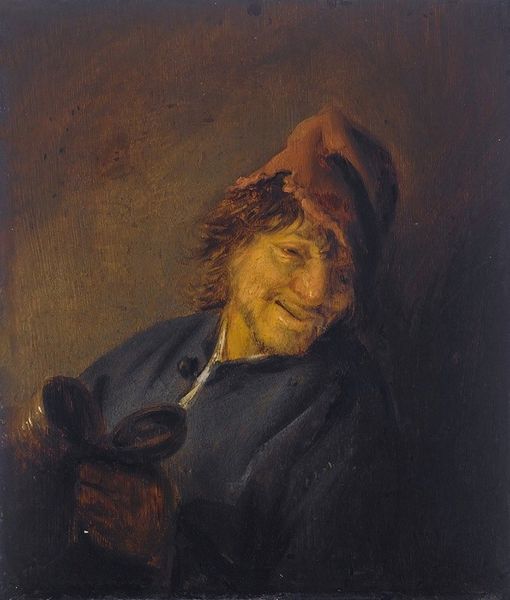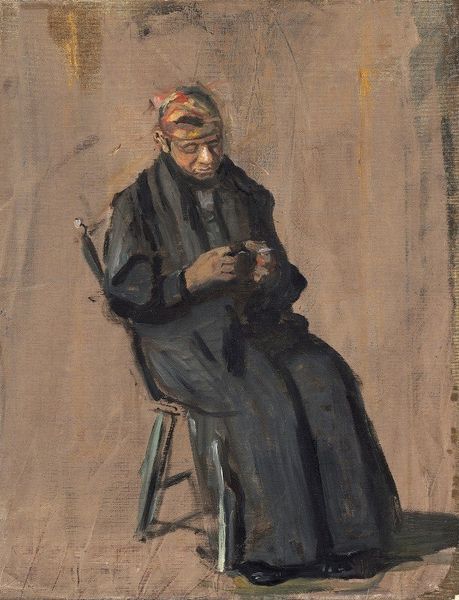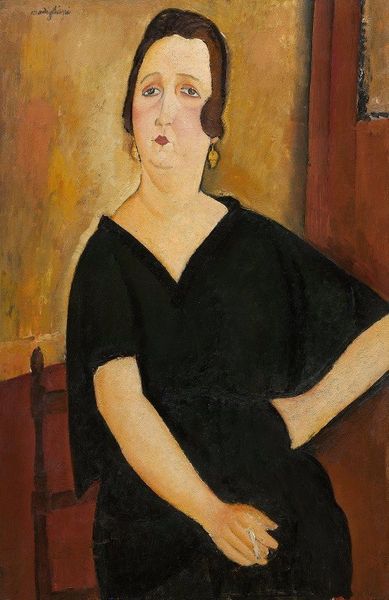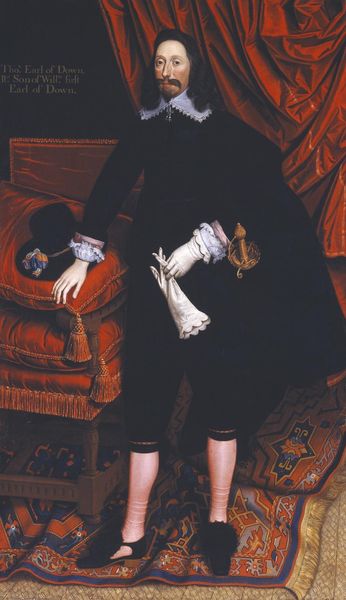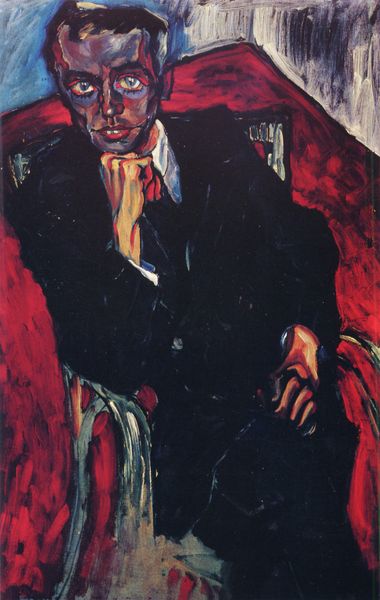
painting, oil-paint
#
portrait
#
painting
#
oil-paint
#
oil painting
#
expressionism
#
cityscape
#
portrait drawing
#
surrealist
#
modernism
Copyright: Public domain
Curator: Boris Grigoriev's 1923 painting, "The Harlot of Marseilles," is quite striking, don't you think? Editor: Yes, the stark juxtaposition of textures immediately grabs me. That intense, almost aggressively patterned red wallpaper against the heavy, velvet-like blacks of the figure's dress. It feels deliberate. Curator: Grigoriev was certainly deliberate. The symbolism here runs deep. Notice how the woman is positioned next to what appears to be a bar sign seen through a window – a cage of sorts. Her turned profile suggests both aloofness and perhaps entrapment within her societal role. The red background in this work perhaps symbolizes passion and danger but is used ironically, like faded, artificial flowers. Editor: And look at how he's handled the oil paint. It's applied so thickly in places, creating a real sense of weight, particularly in the rendering of the dress and the oddly angular planes of her face. This isn't about idealized beauty; it's about the harsh realities etched onto her skin. It suggests a brutal physicality. Curator: Precisely. The 'mask' she wears connects her to theatrical traditions, yet she looks aged, or is aged deliberately, connecting the transience of human life with artifice and fleeting entertainment. This makes the reading of “harlot” a complex metaphor and less of a label of moral failing. Editor: Interesting. It really pushes at our preconceived notions of portraiture, doesn’t it? The visible brushstrokes, the materiality of the paint itself—they become crucial parts of the narrative, revealing not just her likeness but the societal forces shaping her existence. Curator: Indeed, the title forces us to reconcile the traditional archetype of the "harlot" with her complex, introspective image in which the inner world is at war with outside expectations, and material concerns are never far removed from inner states of consciousness. Editor: I keep coming back to the contrast in textures – that speaks volumes about class, labor, the decorative as camouflage, and ultimately the artist's critique of the social structures within Marseilles, doesn't it? Curator: Absolutely, a fascinating look at Grigoriev’s work through the window into this woman's lived experience! Editor: This exploration sheds new light not only on Grigoriev’s creative practice, but how materiality is inextricably bound up with meaning itself!
Comments
No comments
Be the first to comment and join the conversation on the ultimate creative platform.
